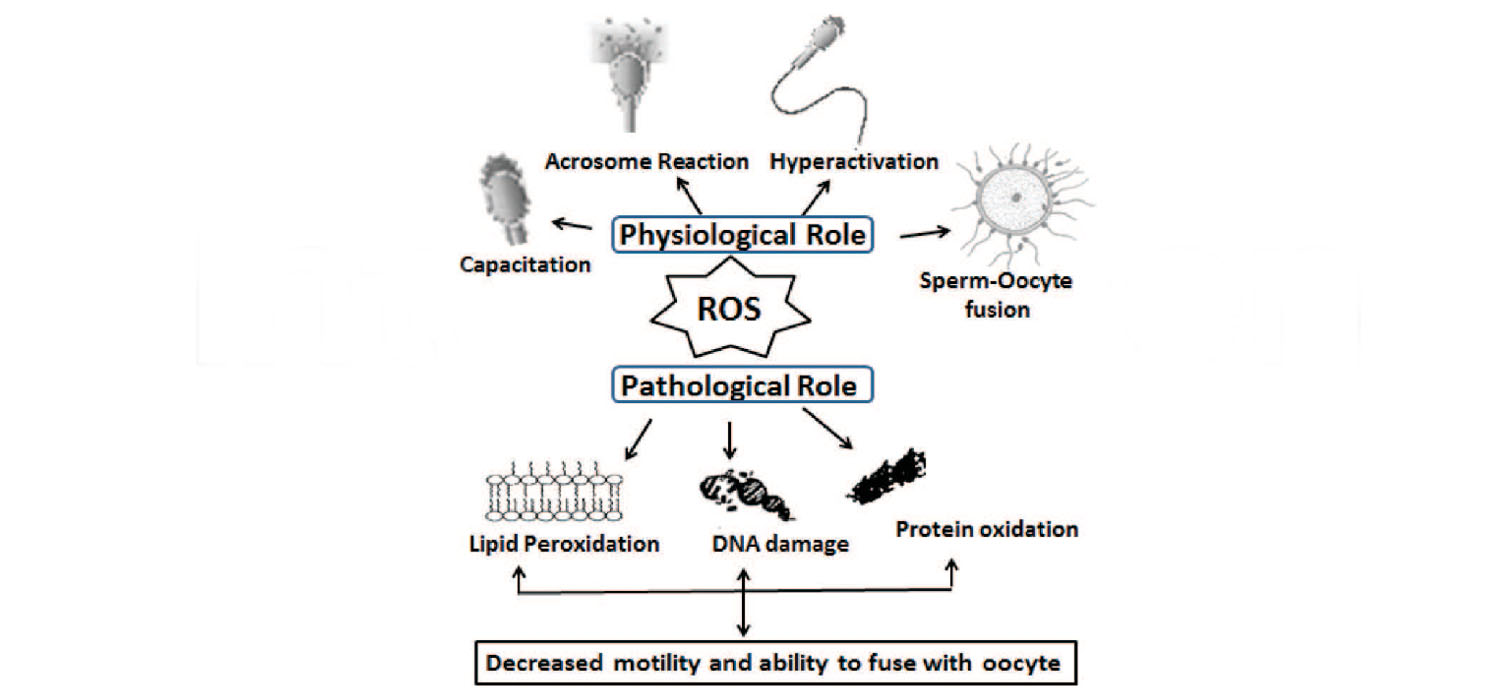Reactive Oxygen Species and Male Infertility
Reactive oxygen species (ROS) are natural byproducts of cellular oxidative metabolism. They play important roles in the modulation of cell survival, cell death, differentiation, cell signaling, and inflammation-related factor production.
ROS includes oxygen ions, free radicles and peroxides like-Superoxide anion (O2−), hydrogen peroxide (H2O2), and hydroxyl radical (HO•). The body has natural anti-oxidant mechanisms to counter excessive ROS. However, when the anti-oxidants mechanisms are overwhelmed, the excessive ROS can cause damage. They affect integrity of cell membranes (due to lipid peroxidation), deplete mitochondrial ATP and cause damage to cellular proteins and the sperm DNA. This can result in loss of sperm motility, viability and capacity for fertilization.
The key source of ROS in the seminal fluid is activated leukocytes, especially neutrophils and macrophages. They produce ROS 1000 times more that that from sperms though immature and abnormal spermatozoa also contribute. Oxidative phosphorylation in sperm mitochondria is the main source of ROS in sperms.
The sperm membrane is rich in poly unsaturated fatty acids (PUFA), the cytoplasm contains low concentrations of scavenging enzymes and spermatozoa lack the capacity for DNA repair. Hence sperms are extremely vulnerable to oxidative stress.
Alcohol, tobacco, recreational drugs, pesticides, electromagnetic radiations, infections, trauma, torsion, varicocele, cryptorchidism are the causes of raised ROS in semen.
TAC (Total Antioxidant Capacity) is the total amount of enzymatic and non-enzymatic anti-oxidants that can reduce the excessive ROS in semen. Some studies have indicated a positive correlation between normal semen parameters and TAC . ROS-TAC score is used as a marker of seminal oxidative stress. The ROS-TAC score has been used for predicting reproductive potential rather than just ROS or TAC alone. Asthenospermic men had a higher ROS levels and high DNA damage compared to normospermic men. ROS-TAC score improved in men after varicocelectomy.
Sperm function tests to detect raised ROS include Chemiluminescence, Nitroblue Terazolium test, flow cytometry and electron spin resonance. Since they are a major source of ROS, detecting leukocytes in semen is also important. Leukocyte detection can be done by direct count in wet preparation , peroxidase test , ELISA, flow cytometry and immunohistochemistry. However, , there is a lack of standardization of methodology for ROS determination and inconsistencies in establishing a reference range.
Increasing antioxidant intake, treating infections and medical issues, and avoiding exogenous sources of stress (like smoking and poor diet) are some of the methods to reduce ROS and attempt to better the seminal functions.
